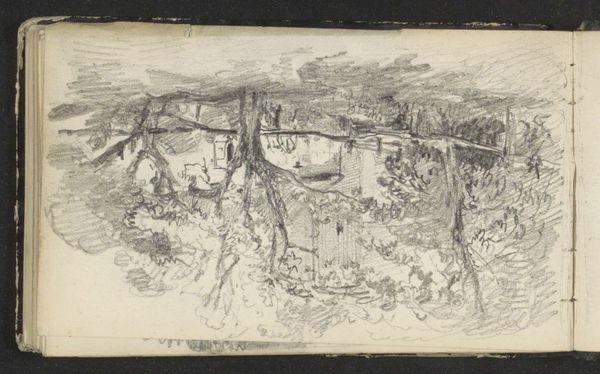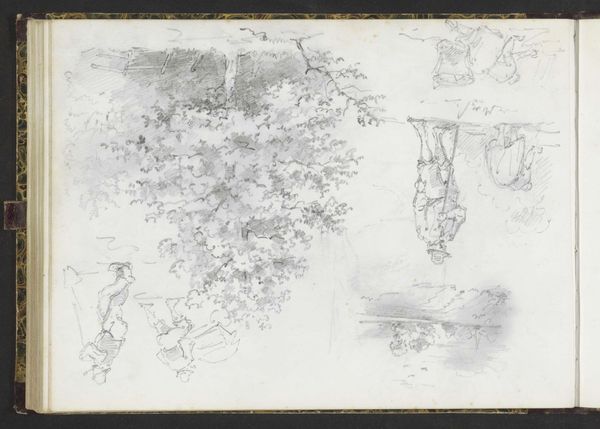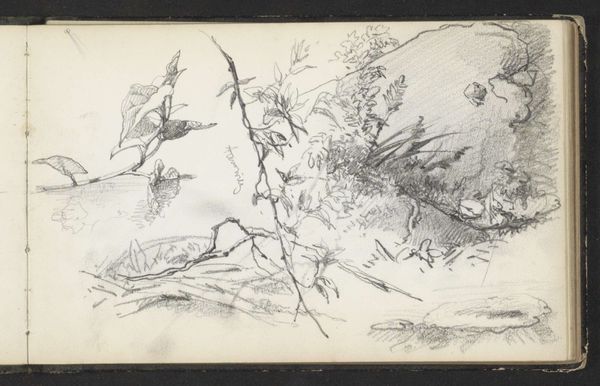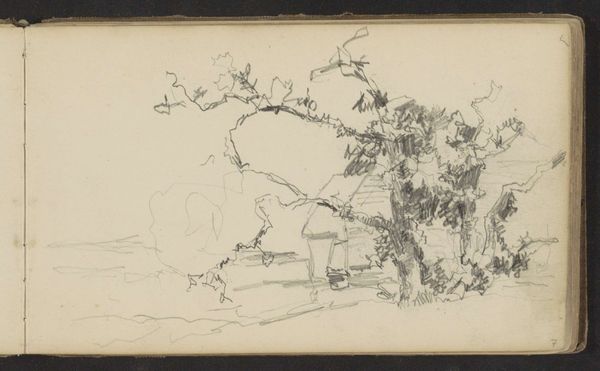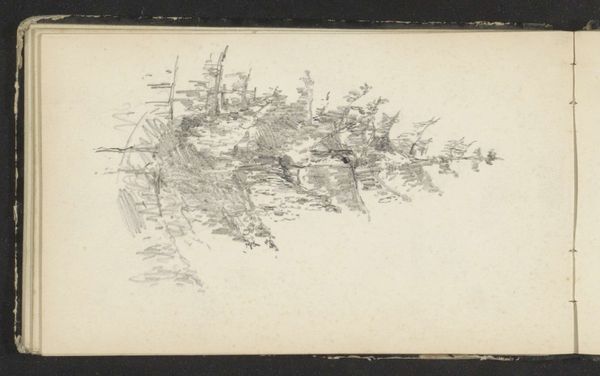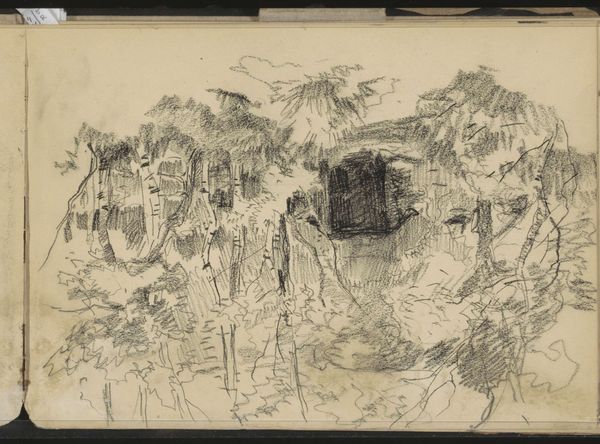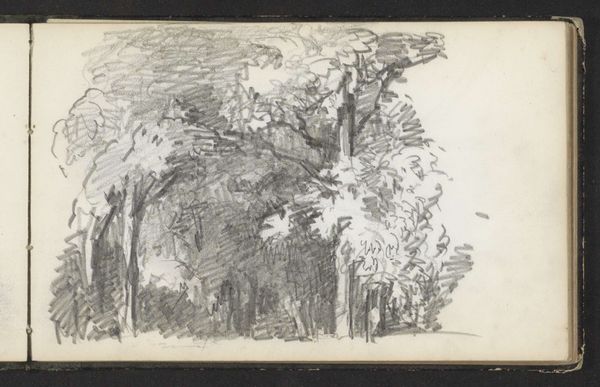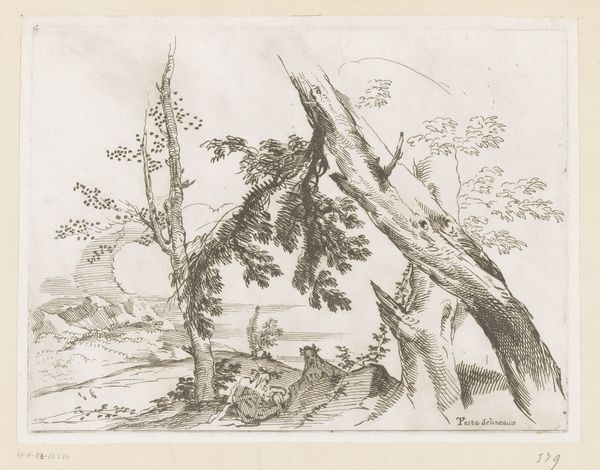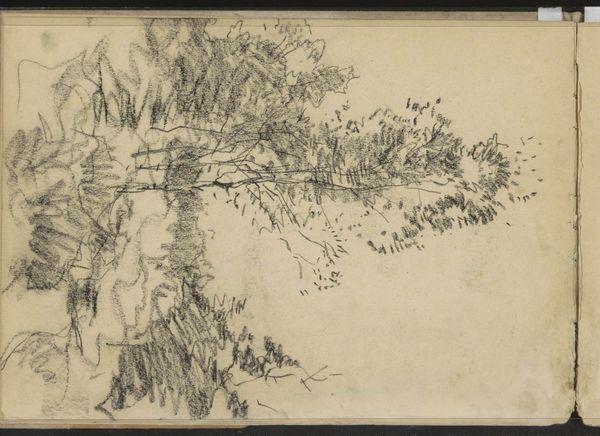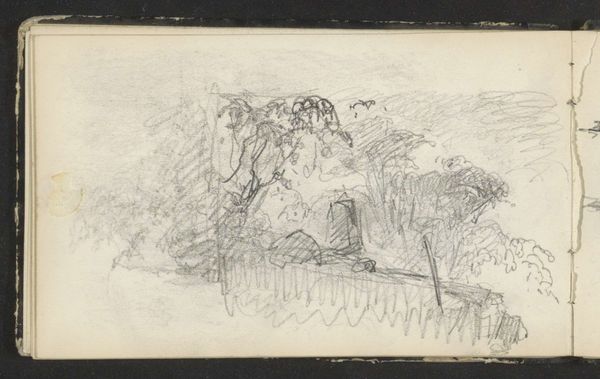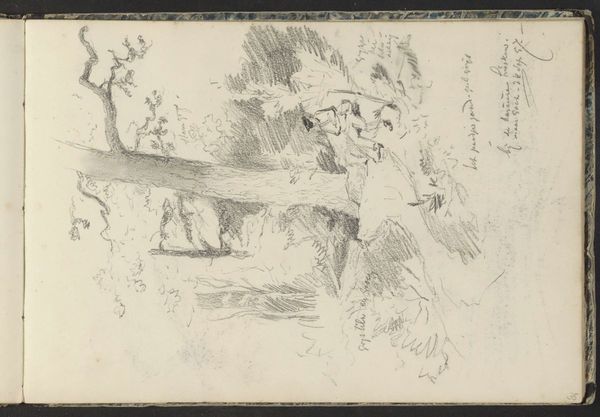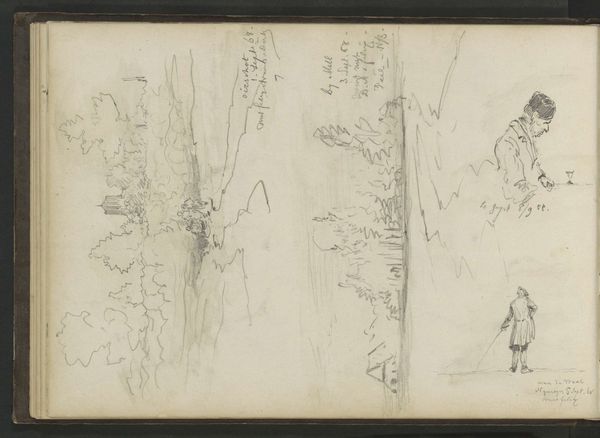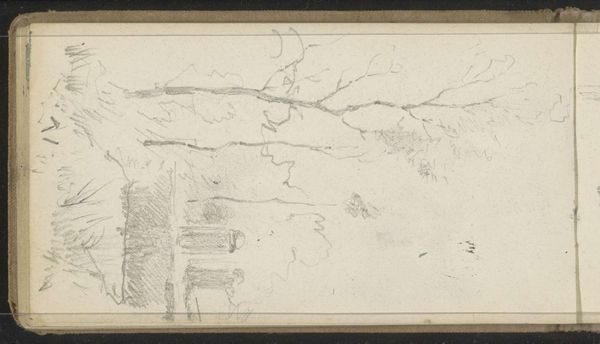
drawing, pencil
#
drawing
#
quirky sketch
#
pen sketch
#
sketch book
#
incomplete sketchy
#
landscape
#
personal sketchbook
#
ink drawing experimentation
#
sketch
#
pen-ink sketch
#
pencil
#
line
#
pen work
#
sketchbook drawing
#
sketchbook art
Copyright: Rijks Museum: Open Domain
Curator: We’re looking at a sketch titled “Planten bij een hek,” or "Plants by a Fence," attributed to Maria Vos, dating sometime between 1834 and 1906. It’s currently held in the collection of the Rijksmuseum. Editor: It feels so immediate, like a quick impression captured in ink and pencil. The energy is almost frenetic, particularly around the foliage. You can almost feel the artist's hand moving rapidly across the page. Curator: Exactly. It's fascinating to consider these quick sketches within the larger context of 19th-century art production. The rise of sketching and plein air painting reflected changing ideas about artistic skill. Spontaneity started to challenge formal academic training. Editor: And look at the variations in line weight, how she builds form and shadow through layering marks. It's less about replicating what's seen and more about exploring the potential of the materials themselves. The raw quality pushes against rigid definitions of "high art". Curator: Yes, there's also a social component. The act of sketching itself could be seen as a leisure activity afforded to middle-class individuals. So these drawings are markers of class and cultural identity in some ways. Editor: And the subject matter -- a simple fence overtaken by nature -- implies something about our relationship to the land, the controlled meeting the untamed. There is a commentary here on society's impact, however light, on our natural environment. Curator: Right, it’s a liminal space. Sketches like this also played a crucial role in the development of more finished pieces. We can study these to learn more about artistic thought processes. Editor: Absolutely, it underscores that art is inherently process-oriented. Even an unassuming sketchbook page carries a wealth of insight on materiality and intention. I will never look at nature the same way after that observation. Curator: It really makes us rethink the very idea of “finish” in art. Editor: Agreed, it makes you think about artistic intent.
Comments
No comments
Be the first to comment and join the conversation on the ultimate creative platform.
